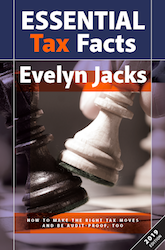
Lucrative Tax Breaks for Families with Children
An often under-claimed and misunderstood tax deduction is the claim for babysitting or child care expenses. Make the claim on auxiliary tax form T778 and generally you will do so on the return of the spouse with the lowest net income. However, there are cases where the higher earner can make the claim. Here are the rules:
Eligible child care expenses. Claimed on line 214 of the tax return, eligible child care expenses include costs of care that apply in order to allow a parent or caregiver (living with and primarily responsible for the child) to do the following:
- Earn income from employment
- Carry on a business either alone or as an active partner
- Attend school under the conditions identified under Educational program
- Carry on research or similar work, for which you or the other person received a grant
Note that Employment Insurance benefits and passive investment income sources don’t count for these purposes.
Claiming child care expenses. Receipts documenting child care costs must be kept. Child care expenses must normally be claimed by the lower-income spouse. However, they may be  claimed by the higher-income spouse during a period where the taxpayer was separated from the other supporting person due to a breakdown in their relationship. This must have occurred for a period of at least 90 days, as long as they were reconciled within the first 60 days after the taxation year.
claimed by the higher-income spouse during a period where the taxpayer was separated from the other supporting person due to a breakdown in their relationship. This must have occurred for a period of at least 90 days, as long as they were reconciled within the first 60 days after the taxation year.
If the taxpayers were not reconciled within 60 days after the taxation year, then each spouse may claim any child care expenses they paid during the year with no adjustment for child care expenses claimed by the other taxpayer.
In addition, the higher earner may make the claim if the lower earner was a full time student, incapacitated or incarcerated.
Other tax credits and benefits for families with children. The child care expense deduction is particularly lucrative not just because it reduces taxes payable, but because it also reduces net income, the figure upon which other refundable and non-refundable tax credits are calculated. Other benefits and credits eligible families will want to ensure they receive include:
- Canada Child Benefit (CCB) which was enhanced in July of 2018 to increase accessibility to Canadians.
- GST/HST credit.
- Provincial benefits and credits.
- Child Disability Benefit.
- Working Income Tax Benefit (now called the Canada Worker’s Benefit)
- Children’s special allowances.
These credits and benefits don’t need to be re-applied for annually, but to ensure they’re received continuously by eligible families, taxpayers need to file their yearly tax returns even if they made no income during the year.
Child care expenses can also be used to reduce withholding taxes, along with RRSP contributions, moving expenses, deductible employment expenses, medical expenses, interest on investment loans, tuition fees, and charitable donations. This is something that most people aren’t aware of, and all it takes is filing form T1213 Request to Reduce Tax Deductions at Source, for taxpayers to see that money appearing back on their monthly paycheques!
Planning ahead, all child care expense receipts for 2018 should be in order and filed for audit purposes, while 2019 receipts for January to April are ripe for assembly as well. New parents in 2019, in particular, should seek extra help with their tax filing rights with a visit to their professional tax specialist for specific questions and advice.
Additional educational resources: Be sure to get your copy of Essential Tax Facts 2019, by Evelyn Jacks, available May 24! This new book will help you prepare for the 2019 tax season, and is integral resource to help educate and inform taxpayers. Pre-order yours today by calling 1.866.953.4769!
COPYRIGHT OWNED BY KNOWLEDGE BUREAU INC., 2019.
UNAUTHORIZED REPRODUCTION, IN WHOLE OR IN PART, IS PROHIBITED.





